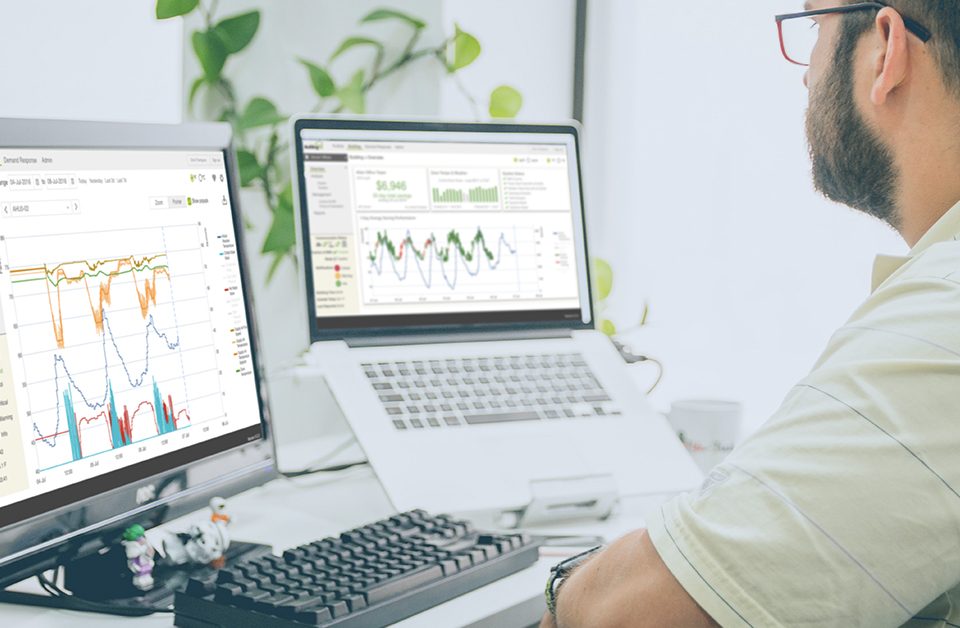
Blog
Next Generation Building Energy Management Systems and Implications for Electricity Markets Whitepaper By Argonne National Labs
July 21, 2011March Madness!
March 12, 2012Today’s green building movement is riddled with reports that passively point to data that has been logged over the course of months, even years. Software pumps out thousands of numbers that point commercial building owners to how much energy they have used and how much CO2 has been emitted. But the data we all once praised and that commercial building owners have invested heavily in has a flaw that people seem to be overlooking: they highlight the problem but don’t point to a solution.
According to a 2009 report by the U.S. Department of Energy, the commercial sector uses about one-fifth of all energy in the United States. In addition, commercial buildings use more than half of that energy on heating, ventilation and air conditioning (HVAC). Current building management systems (BMS) monitor hundreds of environmental factors and sensor readings – from temperature to CO2 levels to how much outdoor air is brought in – all in an effort to increase efficiency and save money.
But these systems are completely inadequate. Why? They’re passive. These systems spit out reports on how much energy a building has already used during the day. In other words, it’s too late to do anything. Ask any military general or stock market broker, and they’ll tell you that’s a lousy way of solving a problem. Reporting is not doing. Managers and owners don’t want to know about how much energy their building has used in the past. They want to know how much it will use in the future, and how they can cut that future usage while still keeping their tenants happy. What they have been clamoring for is literally a “crystal ball” through which they can see how much energy their building will use in the next day, week, month or year, and figure out how to lower it.
The next step in building efficiency involves systems that are proactive rather than reactive, automatic rather than manual, and real time rather than after-the-fact. Predictive Energy Optimization software logs all of the data and stats we’ve come to know and rely on, yet through machine learning can actually calculate how to optimize a building’s overall energy use. By utilizing real-time data such as weather forecasts, energy prices and tenant comfort input, the system can analyze and, in turn, pre-plan and optimize energy use. Furthermore, Predictive Energy Optimization can work with currently installed BMS software. Installation is as easy as simply loading the software onto the BMS computer, eliminating the need for costly system-wide upgrades.
Now that’s innovation: A solution to our energy efficiency problems. This is proactive data that lowers power bills, reduces our carbon footprint and maximizes productivity for tenants.
When it comes to saving energy in commercial buildings, it’s about time we took advantage of current advances in building management technology, and did away with passive reporting techniques. Predictive Energy Optimization enables us to maximize HVAC energy consumption savings, not by sacrificing tenant comfort, but by analyzing and enhancing it.
Thanks to these advances, we now have that “crystal ball” that enables us to proactively optimize our building’s energy use, and truly make them smarter.


